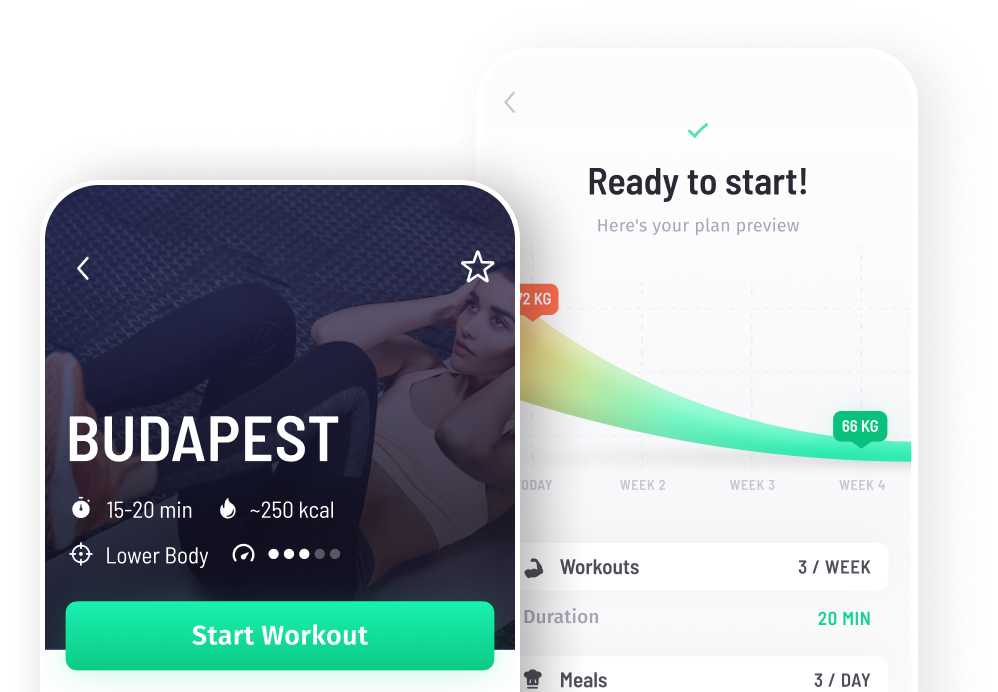Would you have ever thought you could train your body and build serious strength without moving a muscle? You can, with isometric exercises. You have probably heard about isometrics exercise if you have been involved in sports training or even around at the gym, and you were probably wondering ‘what are isometric exercises good for?’ Isometric exercise, also known as isometrics, became more popular in the early 2000s. While it is not a particularly easy or straightforward exercise style, there are many advantages of isometric exercise.
What is isometric exercise?
Isometric exercise is a type of strength training. It requires the contraction of a particular muscle or muscle group while keeping the muscles stable. In an isometric exercise, the muscles are trained in one position the length of the muscles is not changed. Many yoga postures and even Pilates exercises are isometric by nature.
Examples of isometric exercises
A couple of popular isometric exercises are planks, side planks, isometric push-ups, hanging (from a pull-up bar), shoulder extension, wall sit, and warrior III (yoga pose).
Benefits of isometric exercise
Muscle activation
Isometric exercises purely focus on muscle activation. This means that your muscles will only grow stronger as you continue with isometric exercises, and they will be trained to their full potential. You will see the benefits of this training style in other types of training because you will have significantly stronger muscles that will be able to work even harder.
You can do many isometric exercises anywhere

Since isometric exercises only require the full contraction of a particular muscle group, equipment is not required for many of the exercises. In fact, you can do isometric exercises just about anywhere, which makes it easy to get in an effective workout and really tone and strengthen your body wherever you have space.
No equipment required
Isometric exercises do not require equipment as you can perform them simply with your own body. This is why there is so much overlap between bodyweight exercises and isometric exercises. If you do want to lean into something, you can simply incorporate a wall lean, a chair seat, or a push against the floor or ground.
This makes it easy to not only do isometric exercises anywhere, but also with the ability to do them during any time you may have. It doesn’t require you to drive (or pay!) to go to the gym or home to your exercise equipment.
Improve your breathing technique
During isometric exercises, your breath is crucial. As you fully engage a muscle group, this is a challenging task for your body and deep breathing through the exercise will make it more effective and make you feel better. You should be focused on deep breathing starting from your lower belly with a proper inhale/exhale hold throughout your isometric exercises.
Tone a problem area
When you do full body active exercises, you can certainly workout problem areas. However, isometric exercise gives you the opportunity to really focus on a problem area since it is focused on one muscle group or even muscle. If you have a problem area you want to see major improvements in, if you incorporate isometric exercise into your daily routine (for different muscle groups) you can see significant improvements, fat loss, toning and strengthening.
Mix up your workout
When you do the same exercises and engage in the same training style over and over, it can get rather boring. Isometrics is a fun way to challenge yourself by adding some isometric exercises into your workouts. Plus, it gives you the chance to take a break from the treadmill, box jumps, boxing or burpees and slow it down for an exercise that really requires you to tune in with your body.
Rehabilitative nature
The nature of isometric exercise is a rehabilitative one. As it does not require the muscle to move through a range, the exercises are done in a stable and static position that focuses purely on engaging a muscle or muscle group.
Increased mental health
Isometric exercises make you really tune into your body and with yourself. It is also of course a form of exercise and physical activity in general releases endorphins. Isometrics do take time to get the hang of, as the right design and form is necessary to both do the exercise properly and avoid injury. Targeted exercises may need to be adjusted and added too as you increase in flexibility, strength, and what your body is able to do.
In the past, many trainers and trainees have lead with the idea that isometric exercise is a ‘simple’ exercise and this has led to many unnecessary injuries or muscle strains. So be mindful of what you are doing and if you are beginner, it is recommended to work with a trainer to get in sync with the right type of isometric training for you. Slowly add in isometrics and you will only benefit your body!
Did you enjoy this article? Share it!

